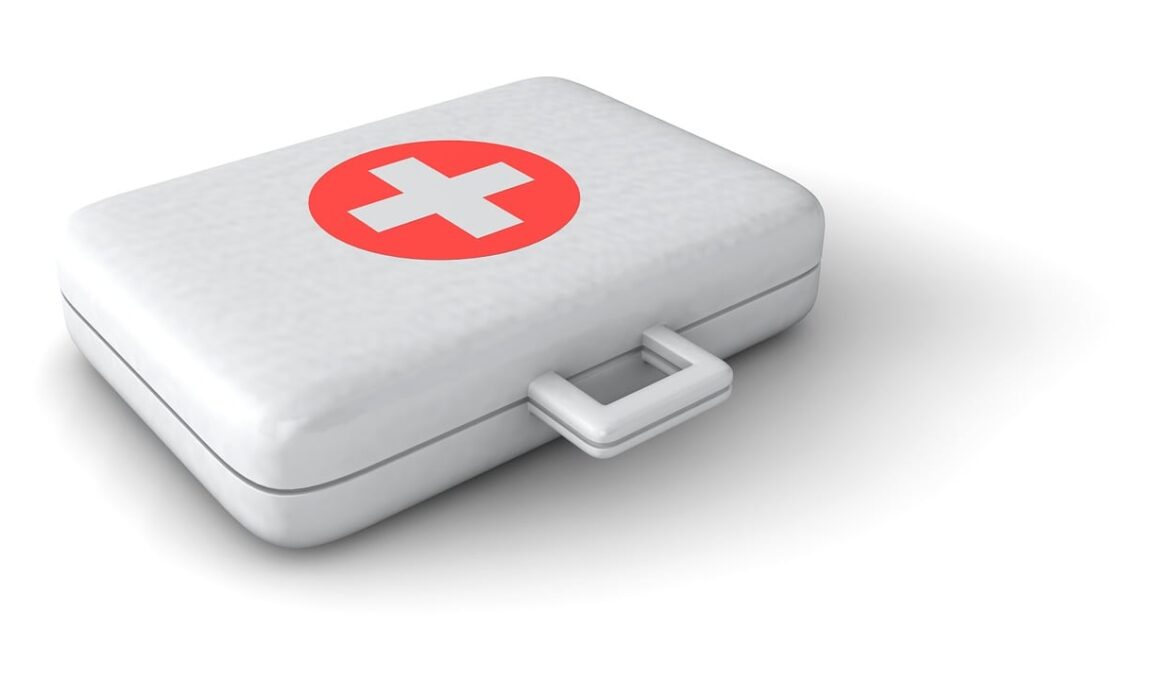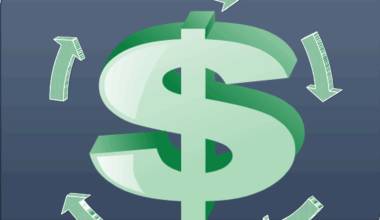Emergency Fund Importance During Debt Reduction Plans
Creating a debt reduction plan often feels overwhelming, but establishing an emergency fund plays a crucial part. An emergency fund provides you with a safety net that can prevent further debt accumulation while you tackle existing obligations. Without this financial buffer, unexpected expenses can derail your repayment efforts and lead to reliance on credit cards or loans. The purpose of this fund is to cover emergencies, such as car repairs or medical bills, without dipping into your already limited finances. Start by setting a realistic savings goal that’s attainable based on your current situation. Even modest contributions add up over time, ensuring you are prepared for life’s unpredictabilities. Aim for three to six months of living expenses, depending on your stability. Many financial advisors suggest keeping these funds in a separate account to avoid the temptation to use them for non-emergencies. This approach can instill discipline in your savings habits. Moreover, when you have an emergency fund, you empower yourself to focus on reducing debt without adding more burdens. Proper planning helps maintain your focus and motivation, steering you towards financial security.
Building your emergency fund should be prioritized before aggressively pursuing your debt reduction plan. By ensuring that you can cover any unforeseen expenses, you reduce the risk of falling back into debt during tough times. Many people overlook this aspect, thinking they will manage any emergencies with credit; however, this creates a vicious loop. When you rely solely on credit, debt can accumulate, causing more financial strain. As you build up your emergency fund, consider automating your savings contributions. This method ensures that a portion of your income consistently goes into savings, making it easier to accumulate funds. Set up a separate savings account and automate transfers so that you can effortlessly grow your fund without needing to remember it every month. Check your budget and allocate a specific amount to save until you reach your goal. Consistency is key in this process, as it requires discipline to develop this habit. As your fund grows, simultaneously adhere to your debt management plan. This balance enables you to cultivate a sustainable financial future, reducing anxiety about potential financial setbacks while actively clearing your debts.
How Much to Save for an Emergency Fund
Determining the exact amount to save for your emergency fund can vary based on individual circumstances. A general rule of thumb is to aim for three to six months’ worth of living expenses. If you have a stable income and minimal expenses, you might lean towards the three-month mark. However, if your financial situation is more unpredictable, leaning towards six months can provide added security. Start by calculating your essential monthly expenses, including housing, food, transportation, and utilities. Once you have a clear picture, multiply this total by the number of months you want to cover. You can always adjust this figure based on your comfort level and lifestyle needs. Simultaneously, remember to review and adjust your savings plan regularly, especially as your financial situation evolves. As you work towards your emergency fund goal, stay committed to your debt reduction efforts. Balancing both accounts can feel challenging but is especially important for achieving long-term financial stability. This dual focus provides a comprehensive strategy rather than a narrow approach to personal finance. It equips you with the tools to handle life’s uncertainties while minimizing debt.
While establishing your emergency fund, it is equally important to maintain good financial habits during your debt repayment journey. One effective strategy is to track your expenses closely. Create a detailed budget outlining monthly income and expenditures, allowing you to identify unnecessary spending. By doing so, you can allocate more funds towards both your emergency savings and your debt repayments. Additionally, consider adopting minimalist lifestyle choices to further enhance your financial position. This can include reevaluating subscriptions, finding more affordable entertainment options, or cooking at home rather than dining out. Consciously redirecting your saved funds towards savings or debt can make a significant difference. Prioritizing consistency is essential. Routine savings can be more impactful than sporadic large contributions. Moreover, staying disciplined while resisting the urge to use your emergency fund for non-emergencies will foster a sense of accomplishment. Every small deposit builds up, providing you with peace of mind as you proceed through your financial journey. Communicating these goals with trusted friends or family can also provide accountability. Sharing your objectives may encourage support and motivation as you work towards financial freedom.
Emergency Fund vs. Debt Payments
Understanding the balance between maintaining an emergency fund and sending payments toward debt is crucial. You may feel inclined to allocate all available funds toward your debt to expedite repayment. However, this approach can backfire if unexpected expenses arise. Prioritize building at least a small emergency fund alongside paying down debt to avoid future financial problems. If you face a significant and unplanned expense, having no funds to draw upon can lead to accruing more debt. When faced with this dilemma, consider the percentage of your income that should go toward each goal. Assess how much you can comfortably contribute monthly to both your fund and your repayments. Fine-tune your budget based on priorities and goals. Some financial experts suggest the “50/30/20” rule, where 50% goes to necessities, 30% for discretionary spending, and 20% for savings and debt payments combined. Adjust these percentages to align with your financial situation. Adopting this balanced spending strategy can create a more sustainable path to ultimate financial health. Remember, the key lies in creating a forward-thinking mindset while dealing with both components effectively.
Establishing a clear structure and timeline for your financial strategy can enhance motivation during your journey. Create achievable goals with specific timeframes, stipulating how and when you plan to achieve your desired emergency fund level. This could involve creating milestones or short-term goals such as saving $1,000 within three months, followed by increasing that goal gradually. Document your progress and celebrate your small wins along the way. Acknowledge these achievements, as they can serve as motivation during more challenging periods. You might also consider seeking external resources, such as financial counseling, to gain insights on effective strategies for combining debt repayment methods and building savings. Having an expert guide you through this journey can provide necessary support and accountability. Additionally, you can join community groups focused on financial wellness, connecting with like-minded individuals who share similar goals. Sharing experiences and learning from others can inspire you, establishing a sense of community during your endeavors. Fostering connections within such groups can enhance your commitment to your plans further. Commitment and resilience will help you navigate the complexities of achieving your financial objectives confidently.
The Long-Term Benefits of an Emergency Fund
Having an emergency fund in place provides manifold long-term advantages that extend beyond immediate debt reduction. It fosters a sense of financial security that underpins your overall well-being. With a dedicated cushion for emergencies, you are less likely to resort back to costly credit options for unforeseen expenses. This significantly reduces the risk of escalating debt and helps maintain a healthier credit score over time. Additionally, a solid emergency fund can also grant new opportunities for investment or career changes, enabling you to pursue endeavors without financial anxiety. When emergencies occur, and you know you have accessible funds, you can address issues swiftly without panicking. Over time, this not only enhances your financial status but nurtures better mental health. As you develop this habit of saving, you grow more responsible and disciplined, translating into wiser spending habits across all aspects of life. Establishing an emergency fund while undertaking debt repayment lays the foundation for building wealth sustainably. Ultimately, this comprehensive approach equips you with the necessary tools to achieve both your short-term and long-term financial aspirations successfully.
In conclusion, establishing an emergency fund during your debt reduction journey is imperative. This financial buffer allows you to manage unexpected expenses without further incurring debt. It promotes a holistic view of personal finance, where savings and debt repayment coalesce. Start small, set achievable goals, and gradually build your fund while staying diligent about your debt. Utilize various strategies such as budgeting, automation, and community support to stay committed to your financial journey. The balance between saving for emergencies and managing debt creates a sustainable financial path. By adopting smart financial practices, you can ensure your emergency fund grows steadily alongside your debt repayment efforts. Emphasize discipline in your approach to both elements, steering clear of temptation to use your fund for non-emergencies. Remember, reaching your financial goals is most effectively achieved with a balanced, well-structured strategy in place. Reflect on your progress regularly and adjust your goals as required to remain on track. Ultimately, your journey towards financial freedom not only hinges on reducing debt but building a safety net that will support your long-term aspirations. Create a healthier financial future for yourself by prioritizing both saving and debt management.


